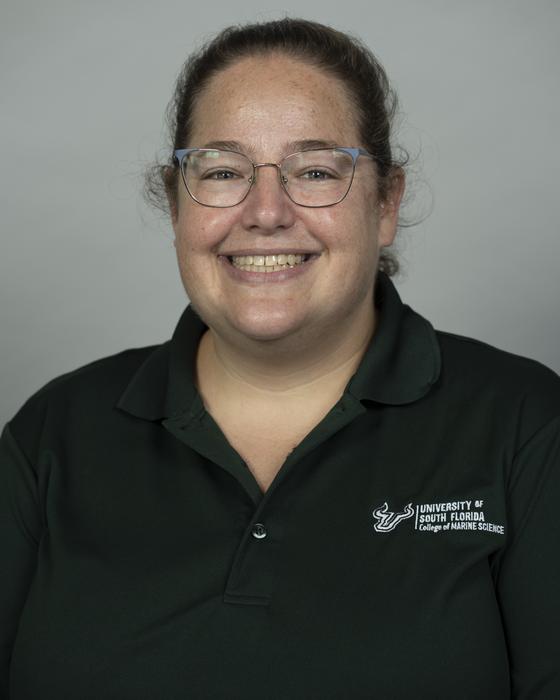New research published in the American Society for Microbiology’s journal, mSphere, has brought to light crucial findings regarding the interplay between viruses and harmful algal blooms, particularly focusing on the species Karenia brevis, responsible for the notorious red tide phenomena in southwestern Florida. The implications of these findings could alter our understanding of environmental factors that drive red tide blooms while opening avenues for potential biocontrol strategies.
The study, conducted by an innovative team of researchers at the University of South Florida, represents a pioneering effort in identifying the specific viruses associated with K. brevis. Through meticulous sampling and analysis of water from red tide events, the researchers uncovered an array of viruses, including the discovery of a new viral species. This groundbreaking research sets the stage for a transformative understanding of how various microbial interactions shape the occurrence and severity of harmful algal blooms.
Viruses have long been recognized for their significant roles within microbial ecosystems, yet their specific associations with K. brevis had remained largely mysterious until this research emerged. By utilizing advanced techniques in viral metagenomics, the research team effectively mapped out the viral landscape accompanying K. brevis blooms. This technique allows scientists to explore microbial communities in depth and provides insights into the ecological roles these viruses play in algal dynamics.
The environmental implications of these findings cannot be overstated. Red tide blooms, driven by K. brevis, have continued to disrupt marine ecosystems, degrade water quality, and pose health risks to humans and aquatic life. Understanding the viral populations present during these blooms may enable researchers to predict when and where red tide events will occur, providing crucial information to coastal communities and stakeholders. Moreover, insights regarding the ecological roles certain viruses play could offer strategies for mitigating harmful bloom events through biocontrol, potentially paving the way for eco-friendly solutions to an age-old problem.
As current monitoring methods rely heavily on satellite images and field data gathered during red tide events, introducing virus dynamics into the predictive models could enhance the precision of forecasting tools significantly. For instance, an uptick in viral populations in water samples could potentially signal upcoming outbreaks or suggest a termination of existing blooms. Through these approaches, scientists hope to better manage and predict the evolution of harmful algal blooms.
The collaborative effort between USF researchers and the Florida Fish and Wildlife Conservation Commission (FWC) underscores the importance of cross-institutional partnerships in addressing pressing environmental issues. With the support of FWC’s harmful algal bloom monitoring program, Lim and her team were able to collect vital samples that have illuminated the viral intricacies associated with K. brevis. This type of collaborative synergy is essential for tackling environmental challenges that exert widespread ecological impacts.
Moreover, the senior author of the study, Mya Breitbart, a distinguished professor at USF’s College of Marine Science, expressed the significance of investigating K. brevis-specific viruses after recognizing the lack of documented viruses affecting this alga. The application of viral metagenomics in this study has not only filled a critical gap in the scientific understanding of red tide dynamics but also heralds a new approach to congruently examining microbial interactions within aquatic environments.
In exploring the implications of viral influences on bloom dynamics, the study opens the door to investigating environmentally safe controlling measures against algae proliferation. The possibility that certain viruses may specifically target K. brevis without adversely affecting other marine organisms presents an exciting prospect for ecological management. By isolating and characterizing these viruses, researchers could potentially develop targeted therapies to manage harmful algal blooms effectively while preserving the integrity of marine ecosystems.
Stepping further into the implications, the complexities of ocean circulation and nutrient dynamics come into play. This research bridges the gap between microbiology and oceanography, recognizing that the interactions of various biotic and abiotic factors contribute significantly to the development of harmful algal blooms. Investigating how these viral agents interact with environmental conditions could lead to deeper insights into the metabolic pathways influenced by nutrient fluctuations and climate change, thereby enhancing our overall comprehension of red tide ecology.
As scientists like Jean Lim continue to build on these foundational findings, the future holds promise for not only enhancing our understanding of K. brevis blooms but also forging paths towards effective intervention strategies that safeguard marine health and public well-being. Rapid advances in technology and collaborative research will play a crucial role in exploring these microbial ecosystems further, providing insights that can inform policies and practices aimed at managing harmful algal blooms.
The study thus marks not just a milestone in the field of research on harmful algal blooms but also serves as a clarion call for increased attention to the complex interplay of microorganisms in aquatic systems. Encouragingly, this research presents an actionable roadmap for the development of innovative control measures that hold the potential to significantly alleviate the socio-economic impacts caused by red tide events. Future endeavors will undoubtedly build upon this study, examining further implications and applications that can emerge from the intricate relationships between viruses and harmful algal blooms.
—
Subject of Research: Viruses associated with Karenia brevis harmful algal blooms.
Article Title: Diverse ssRNA viruses associated with Karenia brevis harmful algae blooms in southwest Florida.
News Publication Date: March 20, 2025.
Web References: https://journals.asm.org/doi/10.1128/msphere.01090-24
References: Will be available in the published article.
Image Credits: University of South Florida.
Keywords: Red tides, Viruses, Environmental health, Coastal zones, Marine ecosystems.




